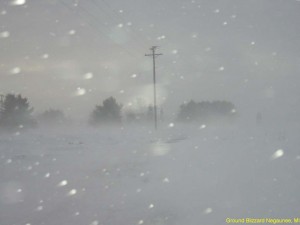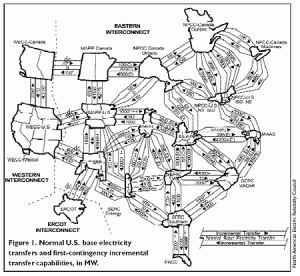Susquehanna-Roseland transmission ramping up
March 3rd, 2009
Last week, there was a Prehearing conference for the New Jersey docket in the Susquehanna-Roseland transmission project. Stop the Lines was there, and several other potential intervenors, to discuss the schedule, which will stretch out likely most of the year, with a decision probably in early 2010. This project is in the Mid-Atlantic National Interest Electric Transmission Corridor, so if the utility doesn’t get its decision in a year, they could push it up to the Feds.
CLICK HERE FOR PSE&G’S SUSQUEHANNA-ROSELAND PROJECT LINK
Their site is cute — it starts with the bold proclamation:
DO YOU KNOW?
The purpose of the Susquehanna-Roseland
line is to ensure reliability in our
region — not to sell power to New York City.
Uh-huh… right…
Here’s a “Regional Planning” powerpoint from PSE&G from the 2/26/09 Highlands Council meeting:
PJM Regional Tranasmission Planning
And a recording of that meeting with the PJM presentation:
Highlands Council Meeting February 26, 2009
===============================
Power line critics want to state case before BPU
Citizens group wants PSE&G to pay for its experts
By Colleen O’Dea • Daily Record • March 3, 2009PJM Interconnection, a regional transmission cooperative, has ordered the work be done.
Offer of Proof filed today
March 2nd, 2009
Looks like Xcel fried my NoCapX site, eh? Just like my computer the afternoon before the Chisago hearing started… Anyway, I can’t get anything to upload, so I’ll do it here and link over there.
NoCapX 2020 had filed a Motion to reopen the hearing when the news came out that utilities were seeing an unprecedented drop in demand… it was denied, BUT, there was this opening:
NoCapX may file an offer of proof if it has newly obtained evidence that calls into question the Applicants’ peak demand forecasting. The offer of proof will be included in the record and forwarded to the Commission in the event that it chooses to review it.
So today I got that filed:
And now, on to Exceptions to the ALJ Recommendation
Comments – FERC docket on Green Power Express
February 28th, 2009
A little birdie told me that the Comment period on the Green Power Express rate docket at FERC has been extended to March 6, a week from now.
To find the FERC docket (maybe there’s a quicker way, but this is all I know so far…), CLICK HERE and search for docket ER09-681.
The filing is just too big to upload, but you can see the redacted version here:
What they’re wanting to do is stick their Construction Work In Progress (CWIP) into the rate base… they want to be able to charge us for this, for putting this together!?!?! “Who” is the rate base in this, what are the costs, at what point could they be assessed?
I’m struggling to wrap my pea brain around this, but I’m wondering what the difference is between this and what Xcel got in the 2005 Transmission Omnibus Bill from Hell, other than a much wider rate base:
The rate base that ITC Holdings could spread this over is immense, as opposed to Minnesota’s utilities’ rate base, and the idea of paying for development of this phenomenally stupid idea just galls me… but I’ve got some reading and thinking to do here. Intervenors are lining up to weigh in and fight about it.
And then there’s that 7,000MW of wind in the MISO queue in Illinois, and it’s the Chicago transfer numbers they want to keep secret. Shouldn’t someone tell them that there’s all that wind in Illinois?
I’m printing out this sucker for a winter night’s read…
Check it out — what do you think?
Breakfast with Gary Schiff – Xcel’s Hiawatha Project
February 26th, 2009
Tomorrow a.m., at too early o’clock, there’s a “Breakfast with Gary” panel discussion on Xcel’s Hiawatha Project. Gary Schiff is the 9th ward council rep, here’s the map. Xcel’s proposed Hiawatha Project runs right through the heart of the district — their preferred route is the Midtown Greenway — great, wonderful idea — whatever are they thinking?!?!?!
Moi is on the agenda, so I’ll be up at “even more too early o’clock” to get there, and from the looks of it outside, Ken and Krie might get hitched to a sled. Snow is letting up, and the guy across the street in Wadley’s old house is blowing snow.
Breakfast with Gary Schiff
Panel discussion of Xcel Energy’s Hiawatha Project
Friday, February 27
7:30 to 9 a.m.
Mercado Central
1515 East Lake Street
Bloomington and Lake in Minneapolis
(remember Antiques Minnesota?)
Be there or be square!!
“What’s wrong with the electric grid?”
February 21st, 2009
Ever wonder what’s wrong with this electric grid that too many are spending too much time to fix? As in, “If it’s not broke, don’t fix it!” Here’s an article sent by Ann Rasmussen, of Dorchester Citizens for Safe Energy, fighting the Mid-Atlantic Power Pathway, that gives the best and most concise statement of the problem that I’ve found. Grappling with this will give you a solid context for understanding all the transmission proposals criss-crossing the US that we’ve seen lately.





